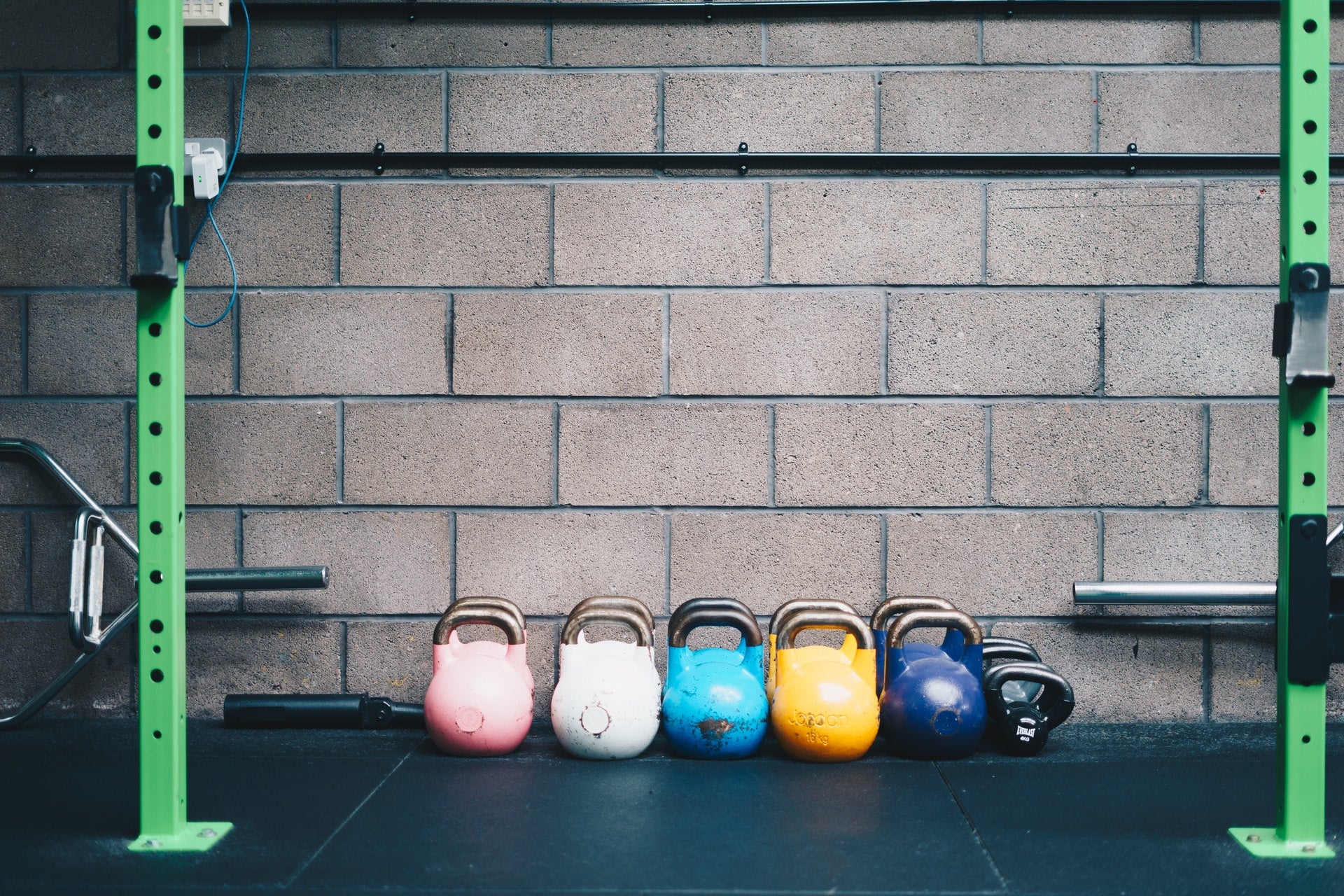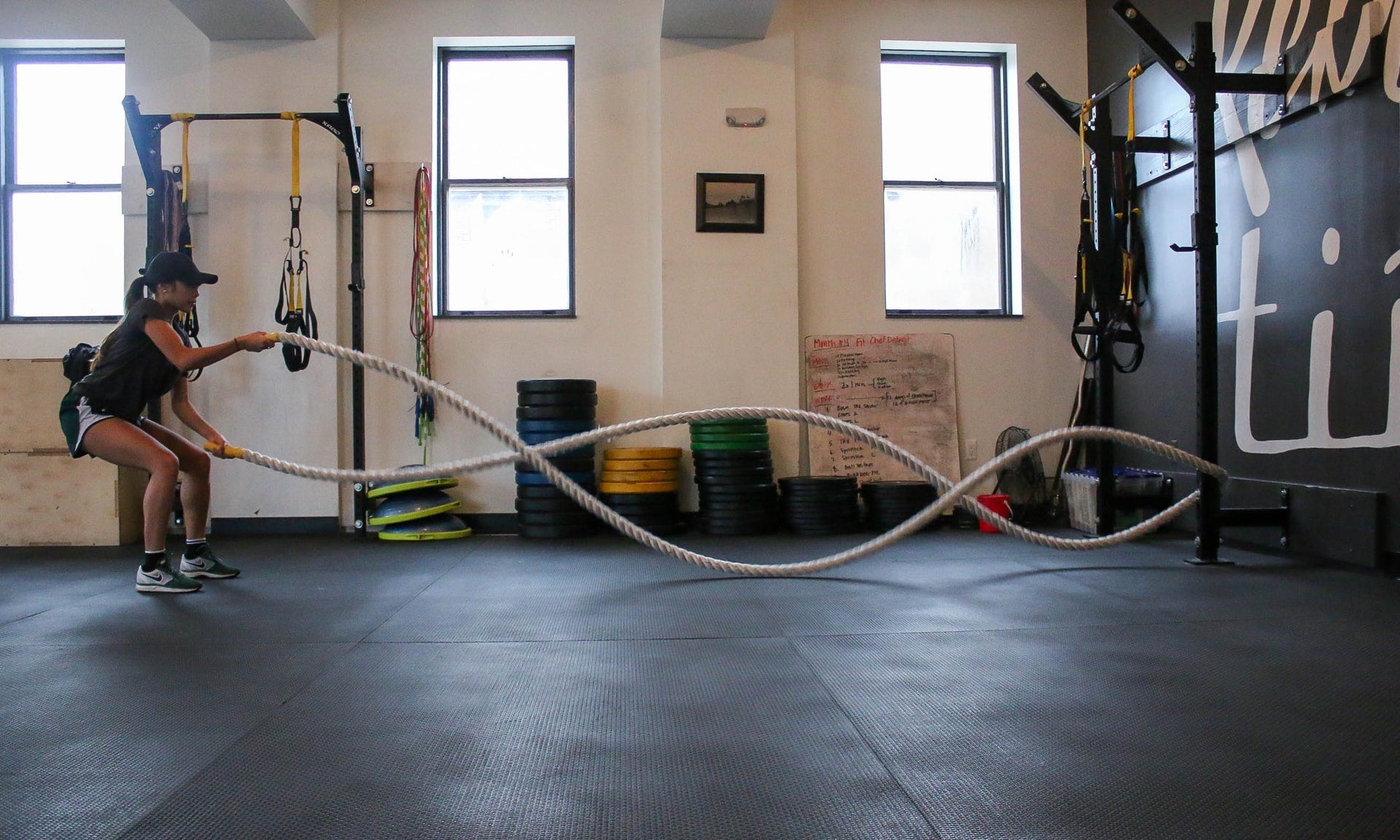Even if you've got a good workout routine going, chances are there are several holes in your training game. Perhaps you’re doing a lot of pushing but no pulling. Or maybe you squat a lot but rarely hinge, or vice versa. That's where these five proven exercises come in to help you increase power, speed, and strength.
Kettlebell Swings
For several years, I’ve been a big fan of Pavel Tsatsouline’s fitness essentialism. If you’re not familiar with him, he’s the former Spetsnaz (Russian special forces) instructor responsible for introducing kettlebell training to the West. Through his company StrongFirst and books like the classic Kettlebell Simple and Sinister (which is spoken of in awed tones among coaches who know their stuff), the first fundamental exercise he teaches experts and novices alike is the kettlebell swing. To do likewise:
- Stand with your feet straight and shoulder-width apart with a kettlebell on the ground just in front of your toes
- Grip the bell with both hands and swing the weight backward like you were hiking a football between your legs, making sure you don’t let go of it
- Squeeze your glutes hard to initiate a counter-swing that sends the bell up and out in front of you (again, don’t let go of the bell!). Keep your shoulder blades pinned back and down as the weight comes up and out away from your body.
- Once the weight gets to chest height, return to the hike phase of the exercise
- Complete 10 swings
- Rest for two to three minutes and do three or four more sets
Farmer Carries
Master strength coach Dan John, who is trusted by everyone from Navy SEALs to pro athletes to regular folks just trying to get fitter, summarizes more than 40 years of experience like this: “Pick up weights, put weights overhead, carry weights.” The swings I just detailed take care of part one and we’ll get to the putting weights overhead in just a moment. But it’s the third part that intimidates a lot of people – which is a shame because carries are just about the simplest and most practical exercises there are. You can try several variations as you progress, such as a suitcase variation that mimics carrying your luggage through an airport and holding a kettlebell against your collarbone (aka a front rack carry). But for the sake of simplicity, here’s how to perform a farmer’s carry, which has long been a staple of strongman contests:
- Place two kettlebells or dumbbells on the ground just wider than your shoulders apart
- Stand between them, hinge at the hips, and pick up one weight in each hand
- Keeping your shoulder blades pinned back and down and your gaze fixed straight ahead, carry the weights. Take small steps and don’t hurry.
- Once your grip starts to go, gently place the weights on the ground. Rest two to three minutes and repeat for two more sets. You can add more pounds or kilos after a couple of weeks.
Single-Arm Push Presses
Now back to part two of Dan John’s strength manifesto: putting weight overhead. A lot of people prefer a barbell for this, and there’s nothing wrong with that. But Pavel and his fellow StrongFirst coaches believe that the kettlebell is a good starting option because it enables you to keep the mass of the bell in line with your hand, elbow, and shoulder as you push it up toward the ceiling. An even niftier invention is Donnie Thompson’s Fatbells, which the legendary powerlifter developed alongside CrossFit Games outfitter Rogue Fitness. Try using one or a kettlebell to do the following:
- Stand with your feet straight and shoulder-width apart
- With a kettlebell or Fatbell in your right hand and the weight pressed into your collarbone, push it overhead. Make sure you squeeze your glutes and abs to stabilize your spine, and start with a lighter weight than you think you’re capable of lifting. There’s no victory in dropping an iron sphere on your head.
- Slowly lower the bell down to the start position and repeat for five total reps
- Rest three to four minutes and then do four more sets
Medicine Ball Slams
Swings and deadlifts do a great job of working the hip hinge pattern that is so prevalent in sports and life. But they only involve opening the hinge. It can be beneficial to also practice closing it by generating power in another way. Enter the medicine ball slam. In recent years, this old training tool has experienced a renaissance thanks to wall balls in CrossFit. But while chucking a ball up against a target is a great exercise, you might want to become familiar with medicine ball work via an even easier exercise. Here’s how to do slams:
- Pick up a medicine ball and hold it by your chest as you stand with your feet straight and shoulder-width apart
- Press the ball overhead until your arms are extended
- Forcefully drive both arms down toward the floor
- Once your torso is almost parallel to the ground, release the ball and let it slam down (avoiding your toes if at all possible)
- Pick the ball back up and repeat the steps for a total of five reps
- Do four more sets of five reps, resting for 90 seconds to two and a half minutes between each set
Single-Arm Rows
Many people love push-ups and do them often. There’s no fault in this, as the push-up is arguably on the Mount Rushmore of bodyweight exercises. But amidst all this pushing (along with the overhead kind explained earlier in this article), it’s easy to minimize the opposite pulling action or exclude it from your training completely. This is where rowing comes in. Ideally, you’d have access to a Concept2, Oartec DX, or similar, which would enable you to build power, strength, and endurance at the same time. But if not, then a single arm row can suffice. Here’s how to perform it:
- Stand alongside a bench or plyo box with your right side next to it
- Place your right knee and hand on the bench or box and hinge so that your torso is just above parallel to the ground
- Keeping your left foot flat on the floor, reach down with your left hand to grip a kettlebell or dumbbell
- Clench your abs to maintain a neutral spine and pull the weight up until it touches the base of your ribcage
- Slowly lower the weight back to the start position, then do another four reps
- Switch sides and take a two to three minute rest between sets until you complete five sets of five reps with each hand




















